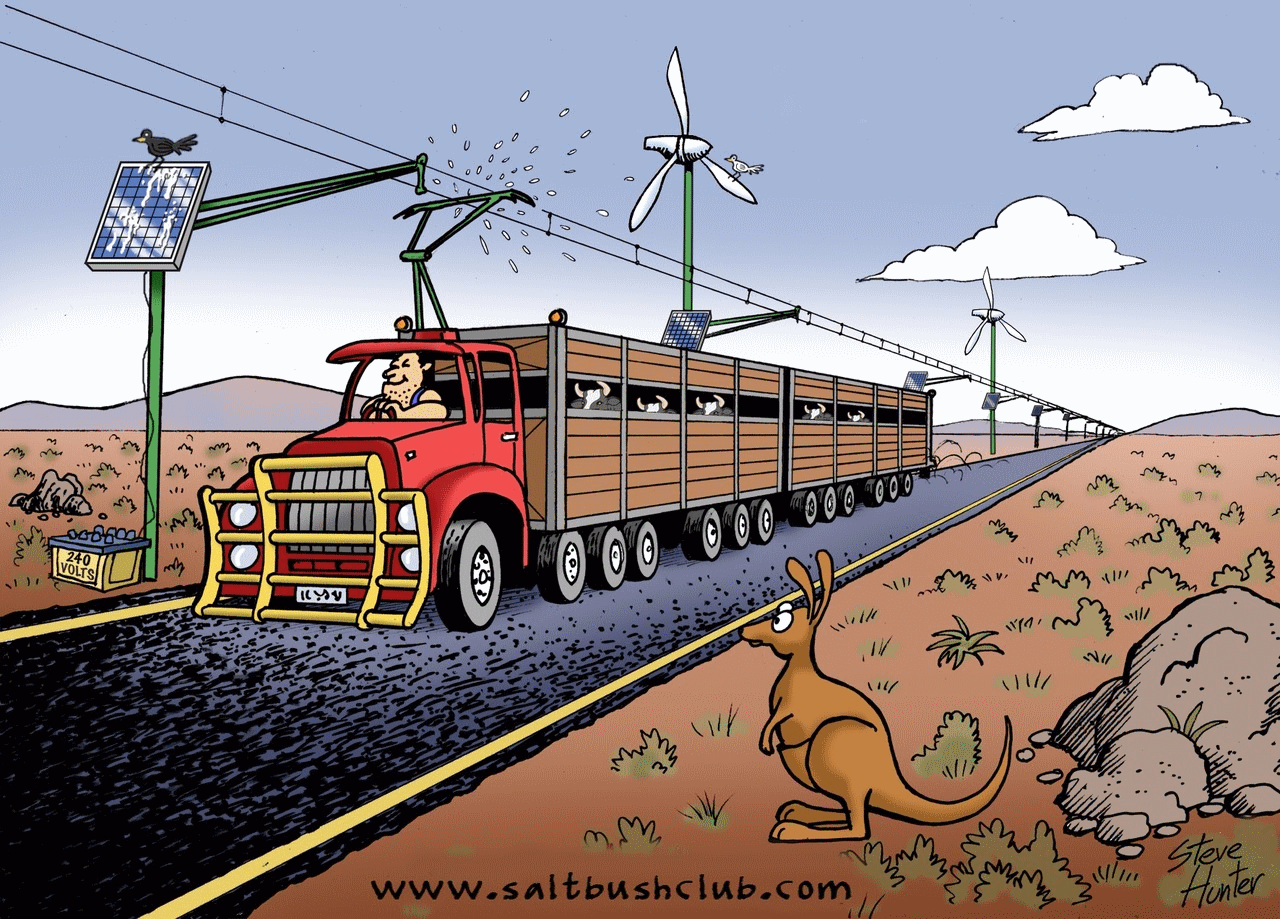Scott Morrison has had another green brainwave – spend a zillion dollars to build Australia's electric/hydrogen highway. Naturally this Fuelish Policy will be supported and accelerated by the Greens/ALP coalition.
They all need to study the history of transport in Australia.
Soon after the First Fleet landed, explorers, prospectors and settlers headed inland seeking grasslands, timber and minerals. Often they followed ancient aboriginal trade routes to discover the best waterholes, river crossings and gaps in the ranges. No governments surveyed their routes, graded their roads, or established stores of hay, grain, water and billy tea along the tracks to re-charge the batteries of their horses, donkeys, bullocks, passengers and drivers.
Advertisement
Feeling left out of this exuberant private road creation, financed mainly by gold, copper, wool and butter, colonial governments rushed to join the steam railway revolution then sweeping the world. Enterprising Americans opened their Transcontinental Railway in the 1860's, crossing 12 states with one rail gauge to link Atlantic and Pacific America. In Australia, private companies started building rail lines in the 1830's but instead of standing aside to let it happen, as America did, parochial Australian politicians and their friends saddled us with three main railway gauges - "Narrow" in Queensland, "Standard" in NSW and "Broad" in Victoria. All were powered by hydrocarbons – coal, wood, oil, diesel-powered electric and coal-powered electric.
Then governments allowed/encouraged unions to gain control of the railways, so service declined, payrolls and costs rose and profits evaporated.
Beside this planned chaos in Australian railways, one private entrepreneur, Freeman Cobb, established his Cobb and Co Coach Service from Melbourne to the goldfields in 1854, doing it in half the time taken by its competitors. No bureaucrats set their routes or approved their plans. Cobb's main plan was "Follow the Gold". No governments established his horse refuelling stations and no coach line ended at a state border. By the 1870's, Cobb and Co covered over 11,000 km of routes from Cooktown to Southern Victoria, with fresh horses and fuel for drivers, passengers and horses every 20 km or so.
Then the Model T Ford and the internal combustion engine ended the horse-coach era (and also drove the first electric cars off the road). No bureaucrats planned or subsidised the establishment of the re-fuelling stations for the petrol and kerosene driven cars, utilities, trucks and tractors that followed the Model T.
Meanwhile, Australian drovers moved stock up and down the great stock routes, trying to follow the storms that refreshed their grass-powered refuelling stations. One enterprising drover, Sidney Kidman (later known as "The Cattle King"), established a string of stations used to refuel his cattle as he moved them across the continent from the channel country in Queensland to sale yards near Adelaide. No bureaucrat planned his business.
But slowly, without political plans or subsidies, diesel trucks and road trains replaced most drovers by providing a quicker service less dependent on the weather. And cities grew as food supplies improved and farm labourers got jobs in growing mining, processing and manufacturing industries.
Advertisement
But today's politicians want to force an electric/hydrogen road revolution. They casually brush aside questions as to who will establish the charging-fuelling stations, who bears the cost of the subsidies and where the reliable energy will come from when diesel, gas and coal are heavily taxed and nuclear energy is banned.
Here is an Australian Cattle Train of the future

https://saltbushclub.com/wp-content/uploads/2021/12/electric-highway.jpeg Permission is granted to reproduce this cartoon (without alteration).
Electric/hydrogen cars should reduce suburban noise and improve city air quality but users should fund their own recharging centres and insurance, and all road users should contribute fairly to the costs of road building and maintenance.
However, a political rush-job to abandon coal and petroleum fuels, together with all their engines, generators and supply chains would be a mammoth and high-risk undertaking. To combine this with the task of planning, funding and building a new transport network based on intermittent green energy, electric engines, batteries and hydrogen is just green fantasy.
This LNP dreamtime electric/hydrogen highway is destined to become the largest ever green flop in our net-zero era. Its foolishness and waste will far exceed the colonial rail gauge mess, the subsidised wind/solar mania and the ALP pink batts scheme.
And if the ALP/Green Coalition wins the next election, this energy/transport disaster will visit us sooner.